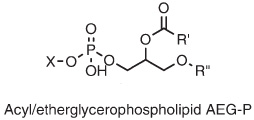Desulfobacter
A Microbial Biorealm page on the genus Desulfobacter
[[Image:.jpg|thumb|350px|right|
Classification
Higher order taxa:
Bacteria; Proteobacteria; delta/epsilon subdivisions; Deltaproteobacteria; Desulfobacterales; Desulfobacteraceae
Species:
|
NCBI: Taxonomy Genome |
Description and Significance
Desulfobacter is a mesophilic gram-negative genera that is capable of oxidizing organic substrate completely to CO2 in anoxic codition. The genus desulfobacter includes acetateutelizing sulphate-reducing bacteria. 10 Methyl 16:0 is an unusual bacterial phospholipid fatty acids (PLFA) characteristic of Desulfobacter-type sulphate-reducing bacteria and could be used as a biomarker for these bacteria [2,3]. Micobiological and molecular studies have suggested the presence of different sulfate reducing bacteria (SBR)in oxic and anoxic layers of soil profile. Dsulfobater, Desulfobulbus and desulfotomoculum species were detected in restricly anoxic conition while Desulfococcus, Desolfonema, and Desulfovibrio species appear to be perdominantly in oxic layers [4].
Genome Structure
Cell Structure and Metabolism
D. variabilis contains significant quantities of AEG-P (top), and almost 20% of the alkyl-glycerol bond is present as DPG lipids, also known as "cardiolipin" (bottom). Note that the DPGs contain either ether or ester linkages in the core lipids.Sturt et al |
| Sulfate reducers have a wide range of cellular morphologies, including rods, vibrios, ovals, spheres and even tear-dropped or onion shaped cells. Some are motile, others are not. Most sulfate-reducing bacteria are mesophilic, but a few thermophiles are known. Desulfosarcina variabilis is mesophilic, and contains bacterial core lipids (see images on left). The dominant phospholipid headgroups in D. variabilis are Phosphoethanolamine PE (48%) and Phosphoglycerol PG (33%). One study has found that Desulfosarcina variabilis solely contained n-hexadecyl ether side chains. For more information on tetraether lipids found in Archaea, click here. |
Ecology
Although sulfate reduction is thought to be an anaerobic process, sulfate-reducing bacteria (SRB) are also important in aerobic environments if they can proliferate in anaerobic zones. For example, in marine sediments and in aerobic wastewater treatment systems, sulfate reduction accounts for up to 50% of the mineralization of organic matter. Furthermore, sulfate reduction strongly stimulates microbially enhanced corrosion of metals.

References
Arches, specifically p.10 populations and methods.PDF here.
[http://www.bact.wisc.edu/Microtextbook/modules.php?op=modload&name=Sections&file=index&req=viewarticle&artid=104&page=1 Microbiology Textbook. Copyright, Timothy Paustian© 1999-2004.]
[1] Lary L. Barton Biotechnology handbooks. Vol. 8-Sulfate reducing bacteria. 1995 Plenum Press, New York.
[2] Dowling, N.J., Widdel, F. and White, D.C. (1986) Comparison of the phospholipid ester-linked fatty acid biomarkers of acetate-oxidising sulphate-reducers and other sulphide-forming bacteria. J. Gen. Microbiol. 132,1815-1825.
[3] Dowling, N.J., Nichols, P.D. and White, D.C. (1988)Phospholipid fatty acid and infra-red spectroscopic analysis of a sulfate-reducing consortium. FEMS Microbiol.Ecol. 53, 325-334.
[4] Sulphate reducing bacteria-book)


